General
For an extended period of time, each year, during winter in Canada, huge deposits of a common mineral, ice, inundate us. The focus of this article is the ice mineralization that encrusts most open bodies of water in this part of the world and its effect on sport fishing activities.
Chemistry
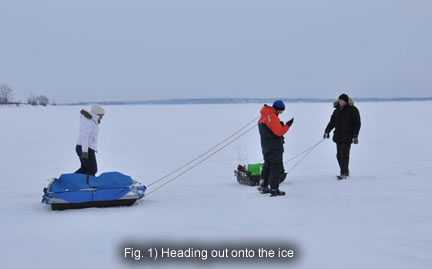
When conditions of pressure and temperature are in a range defined as less than zero degrees Centigrade and pressures of less than 101.325 kPa, significant amounts of the common mineral ice form from the aqueous solutions in the air and on the surfaces of lakes, ponds and rivers. These mineralized deposits are largely H2O with trace amounts of many elements, particularly calcium and sodium. As well, ice crystal deposits often contain inclusions of many organic and inorganic compounds.
Pure ice has a hardness of 1.5 on the Moh’s scale and a density of 0.9167 g/cc. Colour varies from white, colourless, black, blue and green, with many variations, depending on the colour of the underlying water, as well as inclusion colour and density.
Effect on Fishing
During much of the year, access to the surface area of lakes, by foot, is limited to a few metres from shore or as far as a good arm can cast bait with a fishing rod. The only alternative to access further out into the lake is to use boats or canoes, often an expensive, dangerous and cumbersome activity. The advent of ice crusts on lake surfaces, facilitates access to the entire surface area of most lakes by foot. This is a real boon to sport and subsistence fishing (by foot or land-based vehicles), during winter. Of course, it makes access by boat or canoe impossible!
Ice crystals begin forming when water temperature is edged to lower than zero degrees Centigrade by much colder air temperatures and lack of radiant solar energy due to very short periods of daylight. Within a short period of time, the ice crystals merge to form a thin crust which thickens in a relationship directly proportional to air and water temperature. When ice thickness reaches 100mm or more, it, generally, will safely support most human weight. Sub-ice water currents could affect thickness and stability of the ice and are often unpredictable. With appropriate continued air temperatures, ice mineralization will continue to thicken to the point that it will support all-terrain vehicles and even trucks and air-planes on skis. Generally, ice thickness of 0.3 metre are recommended before driving trucks on the ice. Many anglers pull small wooden “huts” or “shacks” onto the ice and leave them there for the duration of the season when ice mineralization is possible.
Ice is a dynamic structure, and behaves much like a horizontal rock structure. Pressures caused by expansion and contraction under temperature and water level fluctuations can cause rifts, cracks and faults (vertical and transverse displacement), all of which can result in dangerous conditions. Often cracking takes place while fishing causing feelings of apprehension amongst novices due to the rather large sound and movements that occur, close by. Generally, cracking of a 0.3m ice layer, although un-nerving is not dangerous. On occasion, non-thinking anglers venture out on areas of ice open on three sides. A large crack on the fourth side can release a large sheet of ice, with the anglers on it, out into the main body of water.
Ice Penetration Techniques
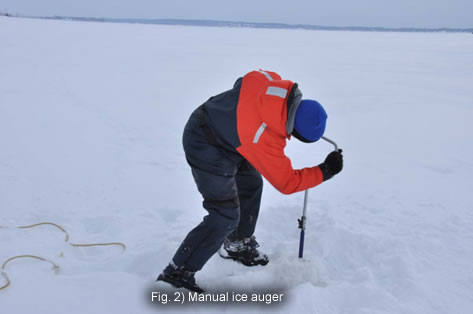
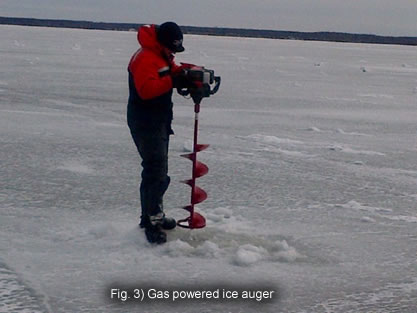
The traditional technique for penetrating the ice mineralization, to access the underlying water (and fish), is to chop a hole through the ice with an axe. Manual augers are commonly used to bore holes of 100-250mm diameter. The author has augured holes, manually, through 1.5 metre in northern Ontario! On occasion, chain saws are used to cut larger holes. Today, serious anglers have gas engine powered augers to facilitate penetration of the ice. These augers make hole production quick and easy.
Fishing Techniques

Methods of fishing through ice mineralization are varied, depending on the region and the species of fish sought. Generally a baited hook is lowered through a hole in ice by short rods, various spools, sticks, etc. The angler simply waits for the fish to attack the bait, sets the hook and then pulls the fish through the ice mineralization via the hole. Easy! Much easier than when there is no ice mineralization to stand on!
Of course, these days, many fisherman use sonar- based electronic instruments to locate fish and increase their chances of catching them.
Summary
The formation of ice mineralization on Canadian lakes results in conditions that enable anglers to travel by foot or wheeled vehicle on the, otherwise, un-accessible surface of those bodies of water. During periods when winter temperatures do not reach adequate sub-zero levels, the ability of anglers to access lake surfaces is limited.
Acknowledgements

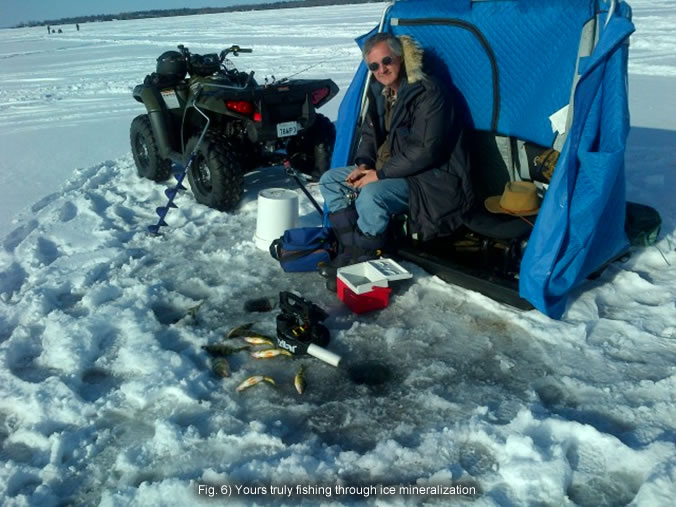
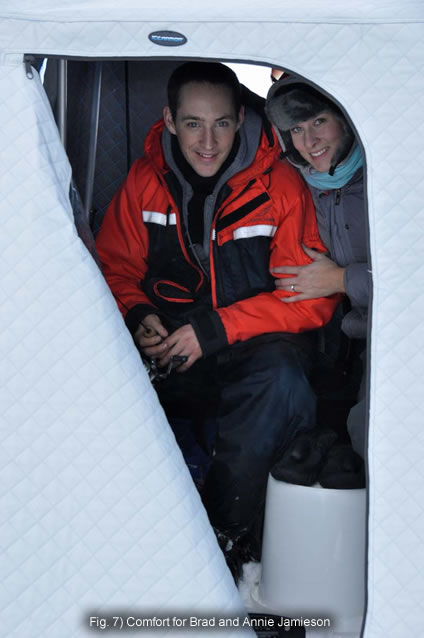
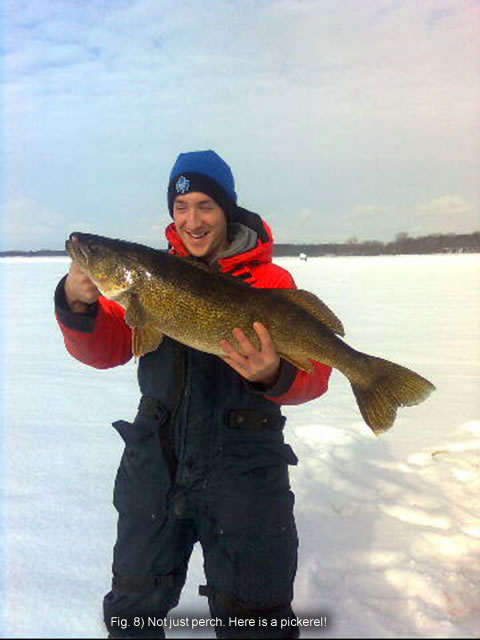
I would like to thank my son-in-law Brad Jamieson for the use of his equipment and his guidance in recent ice fishing expeditions. As well, my brother Brian and sister-in-law Mary Joyce who provide tremendous hospitality!